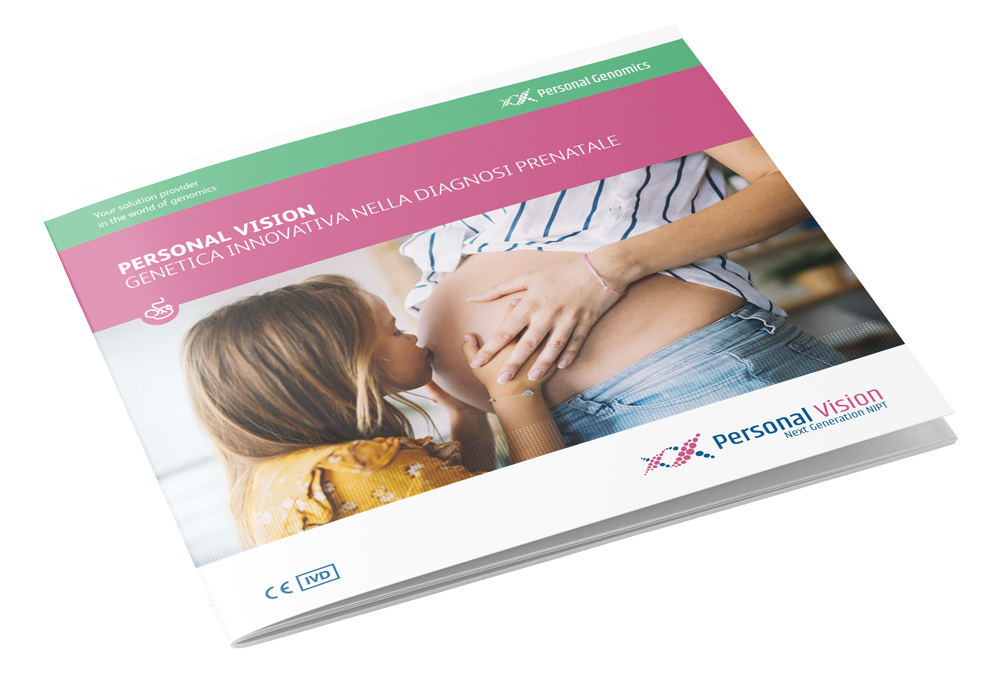
PERSONAL VISION – NIPT
Innovative genetics in prenatal screening

Personal Vision tests are CE-IVD marked

Why get tested?
Personal Vision is a non-invasive prenatal genetic screening test (NIPT) that detects the risk of chromosomal abnormalities (aneuploidy and microdeletions) by analyzing the circulating free fetal DNA by simply taking a blood sample from the mother. The use of this type of test drastically reduces the use of invasive diagnostic investigations, reducing the number of abortions linked to the invasiveness of fetal material sampling techniques.

Tests available
Depending on your necessities, you can choose from the following tests:
Personal Vision Basic, Medium e Full are CE-IVD marked tests.

What are our advantages?
Available forms and completeness of information
The forms required for the execution of the service are user-friendly and provide that they can be filled out quickly, together with the professional who collects the consent.
The test determines the percentage of fetal fraction and reports it in the report to guarantee the accuracy and depth of the investigation, as required by the national SIEOG guidelines, (www.sieog.it).
Availability of home nursing service
Our nationwide organization allows us to provide a home pick-up service (available in the main urban centers). Simply by contacting Personal Genomics customer care, you can agree on the date that best suits your needs.
Pre-test and post-test genetic counseling
Our geneticists are always at the patient’s side to carry out free genetic consultations before taking the sample and following the report to comment on it together. It is essential that the woman / couple receives pre-test counseling, to obtain the necessary clarifications to make an informed choice on whether to undergo screening.
Tests that can be performed for twin pregnancies and egg donations
All Personal Vision tests can be performed both for twin pregnancies, egg donations and twin pregnancies from egg donations. Personal Vision also uses a methodology capable of identifying vanishing twins.


How testing works
The genetic test consists in the execution of a simple venous blood sampling starting from the 10th week of gestation, in the subsequent extraction of the free circulating DNA and, finally, in the analysis of the free fetal DNA circulating in the maternal blood using Next Generation techniques. Sequencing (NGS) and sophisticated bioinformatics analysis.

Reporting time
Estimated reporting times: 3-6 working days for Personal Vision Basic, Medium and Full, 10 working days for Personal Vision Platinum.

Sensitivity and specificity
Analytical sensitivity > 95.5% and analytical specificity > 99.34% for Personal Vision Basic, Medium and Full, analytical sensitivity > 74.1% and analytical specificity > 99.80% for Personal Vision Platinum.
